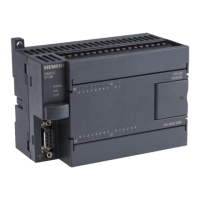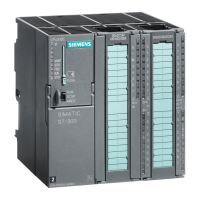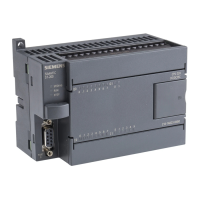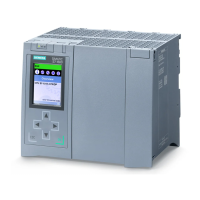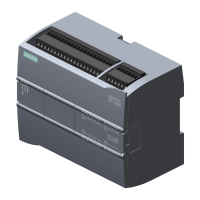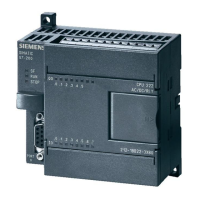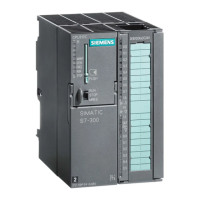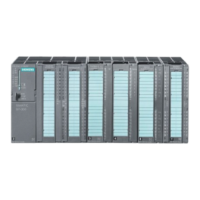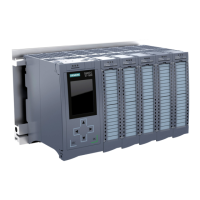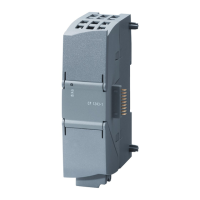Structure of a CPU 41x
2.5 Running a memory reset
S7-400 Automation System, CPU Specifications
Manual, 10/2006, 6ES7498-8AA04-8BA0
2-13
2.5 Running a memory reset
Operating Sequence at Memory Reset
Case A: You want to transfer a new, complete user program to the CPU.
1. Set the mode selector switch to STOP.
Result: The STOP LED is lit.
2. Set the selector to MRES and hold it there.
Result: The STOP LED is switched off for one second, on for one second, off for one
second and then remains on.
3. Turn the switch back to the STOP setting, then to the MRES setting again within the next
3 seconds, and back to STOP.
Result: The STOP LED flashes for at least 3 seconds at 2 Hz (memory being reset) and
then remains lit.
Running a Memory Reset following a Request
Case B: The CPU requests memory reset, indicated by the flashing STOP LED at 0.5 Hz.
The system requests a CPU memory reset, for example, after a memory card was removed
or inserted.
1. Set the mode selector switch to MRES and then back to STOP.
Result: The STOP LED flashes for at least 3 seconds at 2 Hz (memory being reset) and
then remains lit.
For detailed information on CPU memory reset refer to the manual
S7-400 Automation
System, Hardware and Installation
.
What happens in the CPU during a memory reset
When you run a memory reset, the following process occurs on the CPU:
● The CPU deletes the entire user program from main memory and load memory
(integrated RAM and, if applicable, RAM card).
● The CPU clears all counters, bit memory, and timers (except for the time of day).
● The CPU tests its hardware.
● The CPU initializes its hardware and system program parameters (internal default
settings in the CPU). Some default settings selected by the user will be taken into
account.
● If a flash card is inserted, the CPU copies the user program and the system parameters
stored on the flash card into main memory after the memory reset.
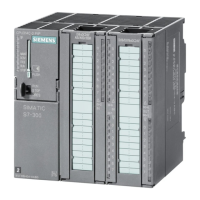
